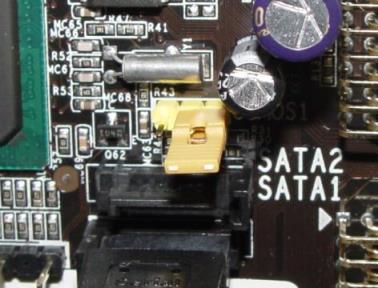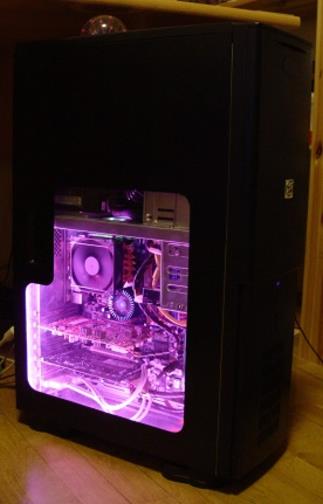
Finishing Touches
Now that we have everything connected, all that is left to do is to take a final walkthrough and make sure that we didnít miss anything. Go through each wire connection, making sure that they are seated firmly. Make sure that you didnít miss any screws, it isnít fun to get everything back together, push a disc into the floppy and it slide into the case because you forgot to secure it. Once you are certain that everything is in order, you should clear the CMOS memory. The CMOS (Complementary Metal Oxide Semiconductor) is a chip on the motherboard used to store important system information and configuration settings while the computer is off and on and is cleared by shorting two pins on the motherboard using a jumper. It isnít required to clear the CMOS, but in order to ensure minimal errors it is always a good idea to do so after any major hardware change. Just locate the pins on the motherboard or in the manual and place a jumper to connect them for about 10 seconds then remove the jumper.

Weíre nearly finished now. Letís put the case door back on, just reverse of how we took it off, plug in all of our peripherals then finally plug our power supply in.
Software Setup
The BIOS (Basic Input/Output System) is a program that deals with the basic level of communication between the processor and peripherals. Usually at initial startup you will be prompted to adjust the BIOS and it will tell you what key or combination you should press to access it. If you are not prompted you should consult the motherboard manual to find what you are required to do to access the BIOS; usually either F1 or Delete, and always right at the beginning of the boot process.

Due to the fact that there are MANY BIOSís out there, Iím not going to attempt to walk you through this, The manual supplied with the motherboard should provide a decent description of what each setting does. I will give you some tips though. Every BIOS that I have ever seen has a fail safe setting which sets every feature to very modest but error free settings, use this feature then fine tune what you would like to. Make sure that you examine the boot priority, this will save you a massive headache. Once your BIOS is configured you can continue to install your operating system and I will leave you to it.
Congratulations, you have just built a computer and totally dispelled the myth that you have to be a genius to do so. Enjoy your new machine.
